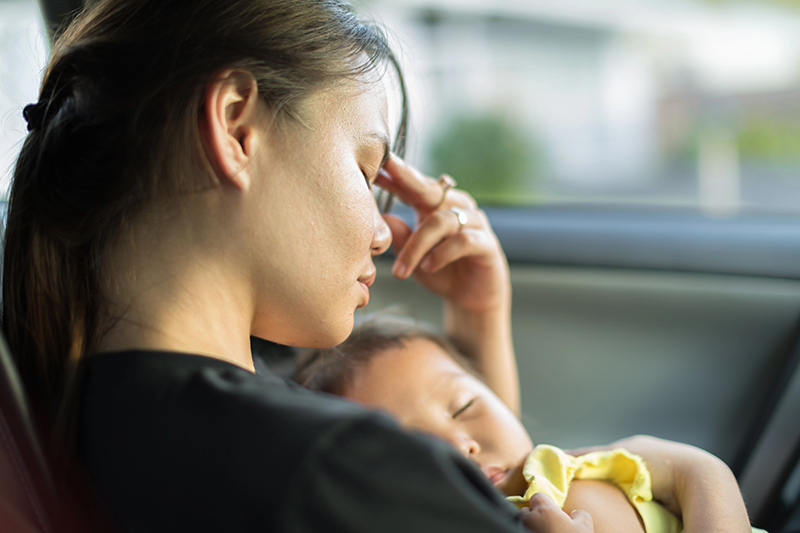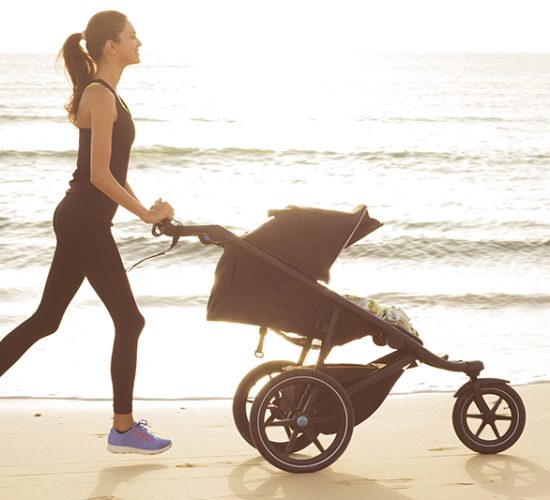Postpartum starts immediately after childbirth and generally lasts six to eight weeks. Your body goes through many physical and emotional changes during this time, with some symptoms lasting months after you give birth. Getting rest, allowing your body time to heal and eating nutritious foods can help you recover from childbirth.
What does postpartum mean?
Postpartum (or postnatal) refers to the period after childbirth. Most often, the postpartum period is the first six to eight weeks after delivery, or until your body returns to its pre-pregnancy state. But the symptoms and changes that occur during the postpartum period can last far beyond eight weeks.
Major body and life changes are happening at the same time during the postpartum period. Some changes are physical — for example, breast engorgement and vaginal bleeding. Other changes occur due to changing hormones. The bottom line is, giving birth is a major physical and emotional challenge. Being a caregiver and adjusting to life with an infant during the postpartum period is also incredibly demanding.
Pay attention to how you feel after giving birth and let your healthcare provider know if something feels off. Just because you gave birth doesn’t mean your care ends or that your health isn’t important. You should try prioritizing resting and taking care of your health in addition to caring for your baby.
Your healthcare provider will schedule postpartum checkups with you so they can continue to monitor your recovery and healing. It’s important to attend these appointments because this is where your provider can identify potential complications. This is also a time when you can ask questions and have honest conversations about your healing.
Postpartum recovery timeline
Your recovery — like your pregnancy — is unique to you. There isn’t a one-size-fits-all timeline to postpartum. But there’s a general timeline of what you can expect.
Some of the things you can expect in the hours and days immediately after birth are:
- Your uterus needs to shrink back to its usual size. This causes cramps and vaginal bleeding. Your provider may even massage your uterus through your belly to help it get smaller.
- Hormonal shifts. This can cause symptoms like hot flashes, changes to your mood and headaches.
- Breast engorgement. Your breasts will produce milk, and even if you choose not to breastfeed, you’ll have painful and swollen breasts.
- Perineal soreness. It’s normal to have pain in the space between your vagina and anus (butthole) if you gave birth vaginally. Up to 70% of people have some degree of vaginal tearing during childbirth. People who have a C-section will feel extra sore around the incision site for a few days.
- Swelling from extra fluids. This is typically normal and your body’s way of getting rid of fluid you accumulate during pregnancy. Your swelling should go down within a week. When swelling comes with symptoms like chest pain and trouble breathing, it could be a sign of something more serious.
- Fatigue. Labor, childbirth and caring for a newborn may introduce you to a new level of exhaustion. Feeling tired for the days and weeks after you give birth is very normal. Trying to rest as much as you can whenever possible will help you feel better.
What are the three stages of postpartum?
Healthcare providers classify postpartum into three phases: the acute phase, the subacute phase and the delayed phase.
- Acute phase: This is the first six to 12 hours after you give birth. You’re most likely to experience conditions like eclampsia, postpartum hemorrhage and certain medical emergencies during this time. Your care will include things like your provider monitoring your blood pressure, heart rate and bleeding, and checking you for excess swelling.
- Subacute phase: This phase begins around 24 hours after birth and lasts for about two to six weeks. Your body is still changing, but you’re less likely to experience a medical emergency. Some of the concerns your provider may have during this period include cardiomyopathy, postpartum depression and symptoms related to urinary incontinence.
- Delayed phase: This phase lasts from about six weeks postpartum until six months postpartum. Changes during this phase are gradual and mainly consist of your muscles and tissues returning to their pre-pregnancy state. Your healthcare provider may treat you for conditions like pelvic floor dysfunction, painful sex and uterine prolapse in the delayed phase.
What are normal symptoms of postpartum?
You go through significant changes in the postpartum period. A lot of them happen naturally due to hormone changes. Symptoms can be physical, emotional or a combination of both.
Physical symptoms
Physical symptoms in postpartum affect your body — things like what it does, what it looks like and how it feels. Some of the most common physical symptoms in postpartum are:
- Soreness and pain in your perineum: Your perineum is the space between your vagina and anus. This area stretches, and sometimes tears, during vaginal childbirth. Your entire perineal area may be sore, swollen and tender for weeks after childbirth. Sitting on a pillow, squirting warm water to rinse the area and using a cold sanitary pad are ways to help with this discomfort.
- Vaginal discharge: Lochia is the name for the vaginal bleeding you’ll have after giving birth (even if you had a C-section). It begins red and tapers off to brown before it ends as a light brown discharge. This entire process can last up to six weeks. Remember, wear a pad to catch vaginal bleeding after childbirth (no tampons).
- Uterus involution: This is the medical term for your uterus shrinking back to its pre-pregnancy size. The entire process can take up to six weeks, but it begins almost immediately after your baby is born. You can also expect to feel afterbirth pains (or strong cramps) while this happens. Most of the intense pains go away after a few days, but they can also feel more intense during breastfeeding.
- Breast engorgement and nipple pain: You can expect swollen and painful breasts for at least a few days or longer (if you breastfeed). Some people need the help of a lactation consultant to help with painful symptoms of breastfeeding like cracked nipples.
- Sweating: Your hormones shift dramatically almost immediately after you give birth. It’s common to sweat more, especially at night. It’s a normal symptom that should subside within a week or two.
- Constipation: Being unable to poop after childbirth is a normal symptom in the postpartum period. If you had an epidural, this can slow down your bowels and make it harder to poop. Sometimes, the fear of pushing to poop leads to constipation. Some healthcare providers recommend stool softeners after you give birth to help. Hemorrhoids are also common in the postpartum period.
- C-section recovery: If you have stitches due to a C-section, your skin will take up to 10 days to heal. The deeper stitches can take up to 12 weeks to heal completely. Watch for signs of infection like pus seeping from the incision or having a fever.
- Hair loss: Losing your hair is a common occurrence in the postpartum period, mostly due to hormones.


